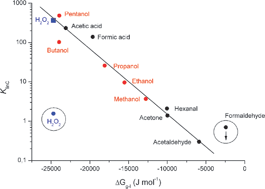The interaction of H2O2 with ice surfaces between 203 and 233 K
Abstract
The interaction of H2O2 with ice surfaces at temperatures between 203 and 233 K was investigated using a low pressure, coated-wall flow tube equipped with a

* Corresponding authors
a
Max-Planck-Institut für Chemie, Division of Atmospheric Chemistry, Postfach 3060, 55020 Mainz, Germany
E-mail:
John.Crowley@mpic.de
The interaction of H2O2 with ice surfaces at temperatures between 203 and 233 K was investigated using a low pressure, coated-wall flow tube equipped with a

 Please wait while we load your content...
Something went wrong. Try again?
Please wait while we load your content...
Something went wrong. Try again?
N. Pouvesle, M. Kippenberger, G. Schuster and J. N. Crowley, Phys. Chem. Chem. Phys., 2010, 12, 15544 DOI: 10.1039/C0CP01656J
To request permission to reproduce material from this article, please go to the Copyright Clearance Center request page.
If you are an author contributing to an RSC publication, you do not need to request permission provided correct acknowledgement is given.
If you are the author of this article, you do not need to request permission to reproduce figures and diagrams provided correct acknowledgement is given. If you want to reproduce the whole article in a third-party publication (excluding your thesis/dissertation for which permission is not required) please go to the Copyright Clearance Center request page.
Read more about how to correctly acknowledge RSC content.
 Fetching data from CrossRef.
Fetching data from CrossRef.
This may take some time to load.
Loading related content
